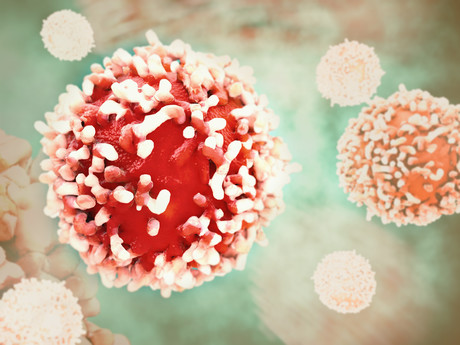Microbubbles help identify malignant tumours

A research team led by Stanford University has developed tiny microbubbles that bind to malignant tumours, making them visible to ultrasound imaging. Their work demonstrates a way to diagnose cancer without resorting to surgery, raising the possibility of far fewer biopsies.
As explained by Dr Jürgen Willmann, lead author on the new study, ultrasound imaging detects a lot of lesions in the breast — most of which are benign. If doctors could use imaging to distinguish between benign and malignant tumours, this would save millions of patients from biopsies they don’t need.
Medical microbubbles are spheres of phospholipids, the same material that makes up the membranes of living cells. The bubbles are 1–4 µm in diameter — a little smaller than a red blood cell — and filled with a harmless mixture of perfluorobutane and nitrogen gas.
Ordinary microbubbles have been in clinical use for several years now, acting as a kind of ultrasound ‘contrast agent’ used to image organs like the liver by displaying the bubbles as they pass through blood vessels. Up until now, however, the bubbles couldn’t latch onto blood vessels of cancer in patients.
The microbubbles used in the Stanford study were designed to bind to a receptor called KDR, which is found on the tumour blood vessels of cancer but not in healthy tissue. Noncancerous cells don’t have such a receptor. Under ultrasound imaging, the labelled microbubbles, called MBKDR, should show up clearly when they cluster in a tumour. Since benign breast and ovarian tumours usually lack KDR, the labelled microbubbles should mostly pass them by.
The study was conducted in 24 women with ovarian tumours and 21 women with breast tumours, each of whom was intravenously injected with the microbubbles. Clinicians used ordinary ultrasound to image the tumours for about a half-hour after injection. The results were published in the Journal of Clinical Oncology.
As expected, the high-tech bubbles clustered in the blood vessels of tumours that were malignant, but not in those that were benign. The technique appeared to be both safe and sensitive, with biopsies and pathology studies later confirming the accuracy of the diagnostic microbubbles. The technique was also found to work with ordinary ultrasound equipment.
“So there’s no new ultrasound equipment that needs to be built for that,” said Dr Willmann. “You can just use your regular ultrasound and turn on the contrast mode — which all modern ultrasound equipment has.”
One of the advantages of MBKDR, Dr Willmann noted, is that the bubbles remain attached to the tumours for several minutes and as long as half an hour — the longest time tested in the trial. That should give clinicians time to image both breasts or both ovaries without having to start over with a new injection of contrast agent.
“We could make ultrasound a highly accurate screening technology that is relatively low cost, highly available and with no radiation,” Dr Willmann said. And since ultrasound technology is accessible almost everywhere, he added, the technology could potentially help patients all over the world.
Now that the phase-1 trial has shown that the MBKDR contrast agent is safe for patients, Willmann’s team is moving forward in a larger phase-2 trial. In that trial, the team will measure how well the combination of MBKDR and ultrasound differentiate cancer from non-cancer in breast and in ovarian tumors. The team will also try to find out how small a tumour can be imaged using KDR microbubbles.
If all goes as hoped, the KDR microbubbles could improve diagnoses and reduce unnecessary surgeries in women suspected of having breast or ovarian cancer. And because the diagnostic approach can, in principle, be used with any kind of cancer that expresses KDR, the researchers plan to image pancreatic cancer tumours as well.
Breakthrough drug prevents long COVID symptoms in mice
Mice treated with the antiviral compound were protected from long-term brain and lung dysfunction...
Antibiotics hinder vaccine response in infants
Infants who received antibiotics in the first few weeks of life had significantly lower levels of...
Colossal announces 'de-extinction' of the dire wolf
Colossal Biosciences has announced what it describes as the rebirth of the dire wolf, which would...




